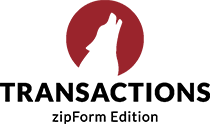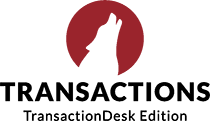
Marketing is full of acronyms—and sometimes, looking at them can feel like trying to make sense out of a bowl of alphabet soup. They’re key for your marketing plans, but there are so many (and so many similar ones!) that it’s hard to keep track.
But what do those collections of letters mean for your and your real estate brokerage? Keep reading for your cheat sheet of some of the most common marketing acronyms!
A
- AIDA: Attention, interest, desire, action—a way of describing the typical buyer process, and the primary mission of marketing.
- AQL: Automation-qualified lead, a lead that your marketing system has qualified and delivered to you.
B
- B2B: Business to business, a specific kind of marketing that talks to other businesses, as opposed to consumers.
- B2C: Business to consumers, a specific kind of marketing that targets consumers, rather than businesses.
- BI: Business intelligence, or the general use of analytics and information to improve business decisions.
- BR: Bounce rate, or the number of visitors on a website who navigate away after viewing just one page.
- BT: Behavioral targeting, a technique for targeting buyers based on their recent online behavior, using cookies from sites they’ve visited in the past.
C
- CPA: Cost per action, a technique for online advertising that charges based on the number of actions (like registrations) it delivers.
- CMS: Content management system, which manages and publishes content on your website.
- CPC: Cost per click, a technique for online advertising that charges based on the number of clickthroughs it delivers.
- CPL: Cost per lead, which refers both to a pricing model for lead generation media and to a performance metric that tells you how much you’re spending on every lead that a specific source brings in. It’s usually calculated as the total cost divided by the number of leads.
- CPM: Cost per 1,000 impressions, and generally the most common pricing model for online banner ads.
- CPN: Cost per name, a technique for pricing email, telemarketing, or postal list rentals or purchases.
- CR: Conversion rate, or the percentage of users who perform the actions you’re looking for.
- CRM: Customer relationship management, which is both an approach and a tech solution for managing communications with clients and prospects.
- CTA: Call-to-action, which is a way to draw your audience to an immediate response, such as a “Book a viewing!” button on your website.
- CTR: Clickthrough rate, a method for identifying the percentage of people that go to your website from an ad. It’s usually calculated as clicks divided by impressions.
D
- DM: Direct mail via a postal service, or direct message on social media platforms.
- DDM: Dimensional direct mail, which is usually boxes or larger packages that stand out.
K
- KPI: Key performance indicator, which is a measurable value that illustrates how well your business is achieving its objectives.
P
- PPC: Pay-per-click, an online advertising model where advertisers pay an agreed-upon amount every time their ad is clicked. This is common on social media and search engines.
- PV: Page view, or how many times a certain page on your website has been loaded by users. It’s useful for gauging how big your website’s audience is.
R
- ROI: Return on investment, which is a way of measuring the benefits of a given investment.
S
- SEM: Search engine marketing, a technique for marketing online that involves promoting a website by increasing its visibility in search engine results. It usually involves a combination of PPC and SEO.
- SEO: Search engine optimization, a technique for increasing how many people visit a website using search engine best practices.
- SERP: Search engine results page, the list that search engines generate after you submit a search.
- SMM: Social media marketing, the art of marketing using social media networks like Facebook and Twitter.
- SMO: Social media optimization, a technique for generating awareness around a brand using social media communities. The goal here is to encourage users to link to your content as much as possible.
U
- UI: User interface, the front end of a website or a program that users will interact with.
- UV: Unique visitor, which indicates how many individual people visit your website in a given time period. It’s good for gauging your actual audience, and if you compare it to page views, can help you see how many people are visiting more than one page.
W
- WOM: Word of mouth, or the verbal or written communication between a satisfied customer and prospects.
With the power of marketing acronyms, you’ll be ready to build a marketing plan for your brokerage that covers your goals from A to Z. Don’t forget to equip your brokerage with the power to manage those extra leads from your marketing efforts. Check out how we can help!


